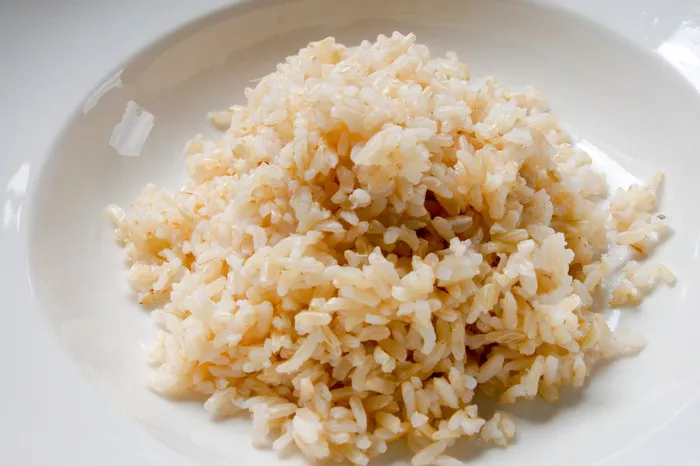Cream cheese spread is a versatile ingredient that finds its way into many recipes, from savory dips to delectable desserts. However, sometimes you may find yourself with more cream cheese spread than you can use before its expiration date. This brings up an important question: can you freeze cream cheese spread? The answer is yes, but with some considerations. This article will delve into the specifics of freezing cream cheese spread, including the best methods, potential changes in texture and flavor, and tips for using frozen cream cheese spread in your recipes.
Understanding Cream Cheese Spread
Cream cheese spread is a soft, creamy cheese made from a mixture of milk and cream. It is typically spreadable straight from the refrigerator and comes in various flavors, including plain, garlic, herb, and fruit varieties. Its high-fat content and smooth texture make it a popular choice for bagels, sandwiches, and as a base for various dips and spreads.
The Science Behind Freezing Dairy Products
Freezing dairy products can be tricky because of their unique composition. Cream cheese spread contains water, fat, and proteins, which can separate and undergo texture changes when frozen. The water in the cream cheese forms ice crystals, and when thawed, these crystals melt and cause the cheese to become grainy or watery. The fat and protein structure can also be affected, leading to a crumbly or less creamy texture.
Freezing Cream Cheese Spread: Step-by-Step Guide
While freezing cream cheese spread may result in some texture changes, following proper techniques can help minimize these effects. Here’s a step-by-step guide to freezing cream cheese spread effectively:
1. Choose the Right Cream Cheese Spread: Opt for full-fat cream cheese spread, as it tends to freeze better than low-fat or fat-free versions. Flavored spreads can also be frozen, but be aware that some added ingredients may not freeze well.
2. Preparation: If the cream cheese spread is in its original packaging and unopened, it can be frozen directly. For opened packages or homemade spreads, transfer the cream cheese spread to an airtight container or wrap it tightly in plastic wrap and place it in a freezer-safe bag. Ensure there is minimal air exposure to prevent freezer burn.
3. Labeling: Label the container or bag with the date of freezing. Cream cheese spread can be stored in the freezer for up to two months for best quality.
4. Freezing: Place the cream cheese spread in the coldest part of the freezer to freeze quickly and minimize ice crystal formation.
Thawing and Using Frozen Cream Cheese Spread
Proper thawing is crucial to preserving the quality of frozen cream cheese spread. Here’s how to do it:
1. Thawing in the Refrigerator: Transfer the frozen cream cheese spread to the refrigerator and allow it to thaw slowly. This may take several hours or overnight, depending on the size of the package.
2. Avoid Microwave Thawing: Do not thaw cream cheese spread in the microwave, as it can cause uneven heating and further texture changes.
3. Stirring: Once thawed, the cream cheese spread may have a slightly grainy texture. Stir it well to help re-incorporate any separated water and fat. You can also use a hand mixer or food processor to achieve a smoother consistency.
4. Usage: Thawed cream cheese spread is best used in cooked or baked recipes where its texture changes will be less noticeable. It may not be suitable for spreading on bagels or using in uncooked dips where a smooth, creamy texture is desired.
Creative Ways to Use Frozen Cream Cheese Spread
While thawed cream cheese spread may not be ideal for all applications, it can still be used effectively in various recipes. Here are some creative ways to use frozen cream cheese spread:
1. Baked Goods: Incorporate thawed cream cheese spread into baked goods like cheesecakes, muffins, and cakes. The texture changes will be less noticeable once baked.
2. Casseroles and Pasta Dishes: Add thawed cream cheese spread to creamy casseroles or pasta dishes. It will blend well with other ingredients and create a rich, creamy sauce.
3. Soups and Stews: Stir thawed cream cheese spread into soups and stews to add creaminess and depth of flavor.
4. Savory Dips: Use thawed cream cheese spread as a base for savory dips that will be baked or heated, such as spinach and artichoke dip or jalapeño popper dip.
5. Frostings and Icings: Blend thawed cream cheese spread into frostings and icings for cakes and cupcakes. The texture changes will be less noticeable when combined with powdered sugar and other ingredients.
SEE ALSO: Can I Freeze Carrot Cake with Cream Cheese Frosting?
Tips for Minimizing Texture Changes
To minimize texture changes when freezing cream cheese spread, consider the following tips:
1. Blend with Heavy Cream: Before freezing, blend the cream cheese spread with a small amount of heavy cream. This can help maintain a smoother texture when thawed.
2. Portion Control: Freeze cream cheese spread in small portions to make thawing and usage more manageable. Ice cube trays can be useful for this purpose.
3. Avoid Repeated Freezing and Thawing: Repeatedly freezing and thawing cream cheese spread can exacerbate texture changes. Only thaw what you need for immediate use.
4. Use Additives: Some commercial cream cheese spreads contain stabilizers that help maintain texture. Consider using spreads with these additives if you plan to freeze them.
Conclusion
In conclusion, freezing cream cheese spread is possible and can be a convenient way to extend its shelf life. While some texture changes are inevitable, proper freezing and thawing techniques can help minimize these effects. Thawed cream cheese spread is best used in cooked or baked recipes where its altered texture will be less noticeable. By following the tips and guidelines provided, you can successfully freeze and use cream cheese spread without significant loss of quality. Whether you’re saving money by buying in bulk or simply making the most of your leftovers, freezing cream cheese spread can be a practical solution for reducing waste and keeping your favorite ingredient on hand for various culinary creations.
Related Topics:




















